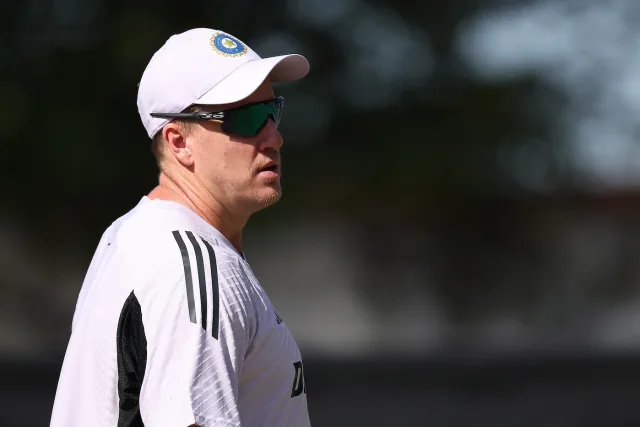India’s Bowling Strategy Under Scrutiny After Record Concession in Manchester Test

Following a tough day in Manchester, where India conceded over 500 runs in a Test innings for the first time in more than a decade outside Asia and the West Indies, bowling coach Morne Morkel found himself fielding questions about team selection, strategy, and energy levels — particularly concerning the omission of strike bowler Kuldeep Yadav.
Despite mounting pressure and scrutiny, Morkel stood by India's approach, emphasizing the balance between batting depth and bowling firepower. “I think it’s about finding when [Kuldeep] comes in, how we can get the batting line-up to be a little bit longer and stronger,” Morkel said. “Kuldeep is world-class and bowling really well at the moment, but with the current team balance, bringing him in affects our batting depth.”
India’s preference for batting insurance over bowling aggression has come into question, especially in the wake of a lackluster bowling performance that saw England dominate on a flat but responsive surface.
Defensive Selections in Focus
India have yet to play Kuldeep Yadav on this tour, despite his growing stature as a match-winner. Morkel acknowledged the dilemma, saying, “We've seen in the past that we've lost wickets in clumps. So, we're trying to find consistency from our top six before we can bring in someone like Kuldeep.”
He added that India’s selection strategy has revolved around the need to post 400-plus totals — particularly against a free-flowing England side. “You need it against England, especially with the way they play their cricket,” he said.
Spin Left Late, Zip Missing
The pitch in Manchester offered turn from early on, but India delayed using their spinners. Washington Sundar, who was the last bowler introduced, made an immediate impact by picking up two wickets and slowing England’s momentum.
Morkel explained the decision: “Shubman [Gill] made the call to persist with seam initially. The ball was seaming and moving around a bit, and we didn’t feel we had bowled enough good balls to justify going to spin immediately. But when Washington got the opportunity, he did a great job for us.”
Despite the presence of spinners like Ravindra Jadeja and Washington, the inclusion of Shardul Thakur as a fourth seamer who bowled just a few overs added to the debate. Morkel admitted it was difficult to utilize Thakur effectively in a four-seamer setup: “When you're going at five runs an over, the captain wants to bring back strike bowlers to try and take wickets. It was similar for Shardul in the first Test too.”
Drop in Pace and Energy
India’s attack looked significantly down on pace and intensity. Mohammed Siraj, often the spearhead, showed signs of fatigue, while debutant Anshul Kamboj, clocking speeds in the high 120s kph, struggled to make an impact. The decision to pick Kamboj over Prasidh Krishna, who had played the first two Tests, raised eyebrows.
“The idea was to pick someone who could bowl volume — a consistent, stump-to-stump operator,” Morkel explained. “Anshul has done really well on the India A tour here and earned his place.”
However, Morkel conceded that the bowling lacked energy and penetration. “On a flat surface, you need a little bit of zip off the wicket to create chances for caught behinds and lbws. That’s definitely something we’re trying to get our heads around.”
He credited the effort of the players but admitted the lack of bite in the bowling was an issue. “The guys have had heavy workloads, and the outfield has been heavy too. But on good surfaces, you still need that extra energy behind the ball.”
Room for Reflection
While Morkel defended India’s overall performance across the series — citing close contests at Lord’s and Edgbaston — he acknowledged that Day 2’s performance in Manchester was subpar. “We bowled too straight and went searching. We were better with our areas on the third day, but the energy levels were down.”
With questions mounting over India's strategy and team composition, especially with the series still in the balance, the spotlight will remain firmly on the management's willingness to be bold with selection — and on whether Kuldeep Yadav finally gets his long-awaited Test cap on this tour.